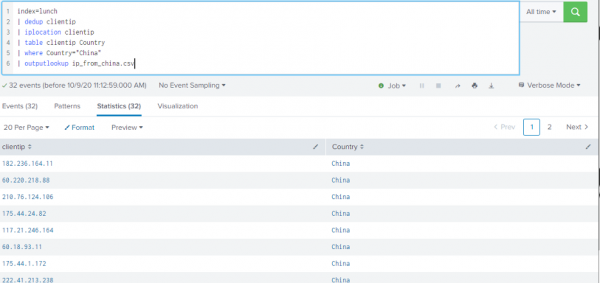

Set up Windows management instrumentation (WMI) inputs.Įnable or disable admission rules in workload management.Ĭonfigure workload pools (compute and memory resource groups) that you can assign to searches in workload management.Ĭonfigure workload rules to define access and priority for workload pools in workload management. Use this file to set up UI views (such as charts). List the visualizations that an app makes available to the system. Includes changing the default earliest and latest values for the time range picker. Use in tandem with nf.Ĭhange UI preferences for a view. Machine-generated file that stores source type learning rules.Įnable apps to collect telemetry data about app usage and other properties.ĭefine custom time ranges for use in the Search app.Īdd additional transaction types for transaction search.Ĭonfigure regex transformations to perform on data inputs. Terms to ignore (such as sensitive data) when creating a source type.

SPLUNK INPUTS.CONF DOCS HOW TO
For example, the file includes settings for enabling SSL, configuring nodes of an indexer cluster or a search head cluster, configuring KV store, and setting up a license manager.ĭefine deployment server classes for use with deployment server.Ĭonfigure how to seed a deployment client with apps at start-up time. Also, map transforms to event properties.ĭefine a custom client of the deployment server.ĭefine ordinary reports, scheduled reports, and alerts.Ĭontains a variety of settings for configuring the overall state of a Splunk Enterprise instance. Set indexing property configurations, including timezone offset, custom source type rules, and pattern collision priorities. Maintain the credential information for an app. Set attribute/value pairs for metric rollup policy entries.Ĭonfigure extraction rules for table-like events (ps, netstat, ls). Set various limits (such as maximum result size or concurrent real-time searches) for search commands.Ĭustomize the text, such as search error strings, displayed in Splunk Web. This can be handy, for example, when identifying forwarders for internal searches. Set the default thresholds for proactive Splunk component monitoring.ĭesignate and manage settings for specific instances of Splunk. Specify behavior for clients of the deployment server.Ĭreate multivalue fields and add search capability for indexed fields.ĭisplay a global banner on all pages in Splunk Web. Set permissions for objects in a Splunk app. Toggle between Splunk's built-in authentication or LDAP, and configure LDAP.Ĭonfigure roles, including granular access controls.Ĭustomize monitoring console health check.Ĭonnect search commands to any custom search script] using in the Developer Guide on the Developer Portal.Īttribute/value pairs for configuring data models. This feature is not available for this release. See How to edit a configuration file.Ĭonfigure auditing and event hashing. Contact Support before editing a conf file that does not have an accompanying spec or example file.ĭo not edit the default copy of any conf file in $SPLUNK_HOME/etc/system/default/. Some conf files do not have spec or example files. This will be 0 if no session key was requested.The following is a list of some of the available spec and example files associated with each conf file. Key length indicates the length of the generated session key. Package name indicates which sub-protocol was used among the NTLM protocols. Adds another indexer cluster manager node to the list of instances the search head searches across./splunk add cluster-manager testsecret -multisite false.

Transited services indicate which intermediate services have participated in this logon request. I am pretty much new to splunk and i have splunk forwarder configured in one of my linux server. Adds monitor directory and file inputs to source /var/log./splunk add monitor /var/log/ 2. Logon GUID is a unique identifier that can be used to correlate this event with a KDC event. The authentication information fields provide detailed information about this specific logon request. Workstation name is not always available and may be left blank in some cases. The network fields indicate where a remote logon request originated. The New Logon fields indicate the account for whom the new logon was created, i.e. The most common types are 2 (interactive) and 3 (network). The logon type field indicates the kind of logon that occurred. This is most commonly a service such as the Server service, or a local process such as Winlogon.exe or Services.exe. The subject fields indicate the account on the local system which requested the logon. It is generated on the computer that was accessed. This event is generated when a logon session is created. Process Name: C:\Windows\System32\lsass.exe Message=An account was successfully logged on. SourceName=Microsoft Windows security auditing


 0 kommentar(er)
0 kommentar(er)
